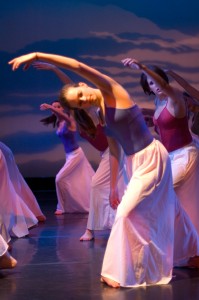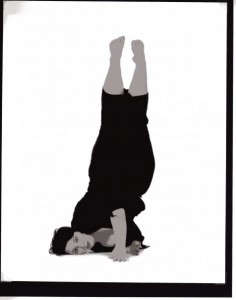by Kimberly Peterson
 I just finished reading a fantastic book called “Girls to the Front” which carries you through the Riot Grrrrl movement of the 90’s in fantastic form. Filled with feminist theory and punk ethos, I find many similarities between the openness and experimentation of this movement, and post modernist theories of dance. Much like my alma mater’s motto of “Every Body Dances”, there is a deep seated recognition and unapologetic validity of the creative journey, and wherever you may find yourself along that path.
I just finished reading a fantastic book called “Girls to the Front” which carries you through the Riot Grrrrl movement of the 90’s in fantastic form. Filled with feminist theory and punk ethos, I find many similarities between the openness and experimentation of this movement, and post modernist theories of dance. Much like my alma mater’s motto of “Every Body Dances”, there is a deep seated recognition and unapologetic validity of the creative journey, and wherever you may find yourself along that path.
It is a noble attitude, one I embrace and look for in dance communities. However, there does exist a personal, social and collective aesthetic which shapes not only the work we create, and the work we enjoy seeing, but also influences the works created in the future.
As artists, we tend to make work that we enjoy and emulate the work and themes we relate to. Through our individual choices, we not only shape the concerts we see, but the funding that is directly or indirectly given to those performances. Through our communal aesthetic, we shape the definition of our art form in the common vernacular. So intertwined are these connections that aesthetics at the personal level, can in fact, shape the type of work we see on a global level.
Criticism is the vehicle by which we shape our individual aesthetic values, and through this, our collective and social aesthetic values. This process of critique, artists with like minded ideas about how art is made, and what art is effective, tend to draw together. This kind of self curation is one that fascinates me as an artist – further, it causes me to contemplate how artists may be able to use this as a curatorial process to our own advantages in models of artist representation.
Admittedly, the idea of curation and critique does come with a smattering of judgment. But I think that by focusing on the effectiveness of the work being created, the emphasis is taken away from “right” and “wrong” ways of making or dancing, and instead it places it on the variety of perspectives and connections people can make to the work. However, curation does raise interesting concerns about communities collectively curating work, and if that inherently creates exclusivity and elitism.
In “Girls to the Front”, there is a deep focus on the Seattle model of creative expression. Their collective punk aesthetic focused so much on genuine expression, regardless of the outcome, that to be a band, one needed only to try from an honest place. Jumping onto stage with your guitar and an open heart was all one needed to be taken seriously as an artist, and a contributing member of the Seattle community. Over time, however, this punk rock ethos has changed. Much as our post-post-modern understanding of dance is changing. The question now is more about how to take the lessons we have learned about inclusion, vulnerability and connection, the preference for authentic connection with dance works over virtuosity, into wherever we head next.
Can curation exist without exclusion at some level? Probably not. But, that doesn’t mean that this sort of self-curation through aesthetics and critique, is bad for the art form. I believe that the key to balancing critique and community is the notion of smaller more localized aesthetic hubs. In fact, I would venture to say that we already do this.
No one creates in a vacuum, and artists who hang out together, see each others shows, make work together, and think about work in similar ways have collectively created an aesthetic ethos. They curate the work they make, the shows they see, the ideas they work from. Certainly, there is room for the multiple voices of localized artists creating work in a way that embraces the necessity of artistic change and embraces a similar aesthetic expression. It is critique, done with the love of our art form, that chips away at the potential for exclusion and instead allows for newness and difference in the form of new aesthetic hubs. With hundreds of these strong aesthetic hubs we would have not only a multitude of creative perspectives, but also a stronger representation of that specific curatorial aesthetic.

Contributor Kimberly Peterson received her Bachelors and Masters of Arts degrees from Texas Woman’s University’s prestigious dance program.
Her 4dancers.org columns, Musings and SYTYCD, focus on on relevant issues in the field of dance including aesthetic education, choreographic process, performance, critique and the role of dance in our culture.
She serves on the Volunteer Advisory Committee with The Soap Factory in Minneapolis; specifically working with developing the Haunted Basement, implementing studio artist workshops/lectures and connecting performance artists/dancers to the gallery through integrated performances.
Drawing on her experience with creating and producing dance works, Kimberly has served technical theater roles, event coordinator, volunteer and as an advisor in various roles at several organizations. Most recently these include: RedEye Theatre, The Soap Factory, Minnesota Fringe Festival and MNPR’s Rock the Garden in collaboration with the Walker Arts Center.




